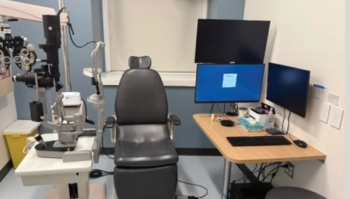
One site or two?
Combined surgical management of coexisting cataract and glaucoma has recently gained popularity because of the several advantages that it presents. These advantages include, decreased risk, easier management of early and long-term postoperative intraocular pressure (IOP) and performing just one surgical procedure to manage both problems.
Although trabeculectomy is considered the gold standard in the management of medically refractive glaucoma, it is associated with potentially vision-threatening complications. Deep sclerectomy is one alternative to trabeculectomy that has been shown to be just as efficacious as the gold standard, but associated with fewer postoperative complications. Recent publications on this procedure combined with cataract surgery have shown satisfactory results concerning visual outcomes and postoperative IOP. However, there is very little information in the literature on how a combined surgery should be performed and, as yet, no consensus has been reached as to whether a one- or two-site approach is better. Here, Zdravko Mandic, MD and his team embark on a mission to find the answers.
In this study we wanted to analyse the outcomes of combined phacoemulsification and intraocular lens (IOL) implantation with deep sclerectomy, on postoperative IOP and complications, in relation to a one-site vs. two-site approach. The study is part of a larger prospective clinical trial on the operation of cataract and glaucoma, being conducted at the University Eye Hospital in Zagreb, Croatia.
The two procedures
Both eyes of each patient underwent a combined procedure, which consisted of phacoemulsification, foldable lens implantation and deep sclerectomy. Eyes were assigned randomly to either a one-site approach at 12 'o clock (phacoemulsification and deep sclerectomy), or a two-site procedure (deep sclerectomy at the 1 o'clock and phacoemulsification at the 10 o'clock position). In all patients, one eye was operated on using the one-site approach and the other eye with a two-site approach.
A fornix-based flap was created between the 12-2 o'clock positions to expose the sclera. In the one-site approach a one-third scleral thickness scleral flap measuring 5 x 5 mm was dissected and extended 1 mm into clear cornea. Phacoemulsification and implantation of a foldable IOL was performed before dissecting a second rectangle of 4 x 4 mm of deep sclera under the initial flap.
During the two-site approach a superficial scleral flap measuring 5 x 5 mm was created at the 1 o'clock position, followed by phacoemulsification and IOL implantation, which was performed at the 10 o'clock position. A second rectangle of 4 x 4 mm of deep sclera was dissected under the initial flap. During the two-site approach, the surgeon did not move the equipment to the lateral side, since the two incisions were in the superior half of the eye (10 o'clock and 1 o'clock). At the end of the surgery, the superficial flap was loosely sutured with two interrupted sutures. All procedures were carried out by the same surgeon and patients were followed up for a mean of 14 months.
Newsletter
Get the essential updates shaping the future of pharma manufacturing and compliance—subscribe today to Pharmaceutical Technology and never miss a breakthrough.













































